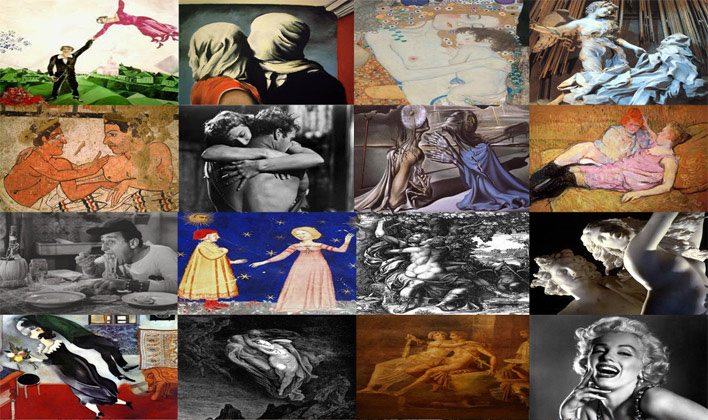I would like to know who I am: Self-identification strategies through fetishes
Abstract
This essay shows the role of the fetish in the path of appropriation of their individualities by the heroes of the novels. In order to do it literary examples focused on education will be used: not only children’s books, but stories focused on the self-individuation, referring to a Jungian Selbst in relation to the Shadow. The authors examined are Virginia Woolf, Jules Renard, James Matthew Barrie, Joanne K. Rowling e Arthur Schnitzler. The aim is to highlight parallels between the classics that have modelled the Western imagery and their Eastern roots in heroic sagas such as Gilgamesh and other myths.
Downloads
References
Bibliografia
Bachofen, Johann Jakob, Le madri e la virilità olimpica: Storia segreta dell’antico mondo mediterraneo, Ed. Julius Evola, premessa di Giampiero Moretti, Roma, Mediterranee, 2010.
Blazina, Chris, The Cultural Myth of Masculinity, Westport (CT), Praeger, 2003.
Botti, Roberto, Dioniso e l’identità maschile, Milano-Udine, Mimesis, 2010.
Carver, Terrell, Men in Political Theory, Manchester, Manchester University Press, 2004
Coomaraswamy, Ananda K., “Sir Gawain and the Green Knight: Indra and Namuci”, “Speculum”, XIX, 1944, pp. 104-125, trad. it. di Roberto Donatoni, Sir Gawain e il Cavaliere Verde: Indra e Namuci, in appendice a Sir Gawain e il Cavaliere Verde, Ed. Piero Boitani, Milano, Adelphi, 1986.
de Rachewiltz, Boris, Egitto magico-religioso, Torino, Boringhieri 1961, Milano, Edizioni della Terra di Mezzo, 2008.
Dumoulié, Camille, Le Désir, Paris, Armand Colin, 1999, trad. it. di Sergio Arecco, Il desiderio: Storia e analisi di un concetto, Torino, Einaudi, 2002.
Fusillo, Massimo, Il Dio ibrido: Dioniso e le Baccanti nel Novecento, Bologna, Il Mulino, 2006.
Id., Feticci: Letteratura, cinema, arti visive, Bologna, Il mulino, 2012.
Johnson, Robert A., He: Understanding Masculine Psychology, Based on the Legend of Parsifal and his Search for the Grail, and Using Junghian Psychological Concepts, New York, Harper and Row, 1977.
Monick, Eugene, Phallos: Sacred Image of the Masculine, Toronto, Inner City Books, 1987, trad. it. di Donatella Besana, Phallos: Il maschile nel mito, nella storia, nella coscienza d’oggi, Como, Red, 1989.
Mosse, George, The Image of Man: The Creation of Modern Masculinity, New York-Oxford, Oxford University Press, 1996, trad. it. di Enrico Basaglia, L’immagine dell’uomo: lo stereotipo maschile nell’epoca moderna, Torino, Einaudi, 1997.
Renard, Jules, Poil de Carotte (1894), Paris, Flammarion, 1946; trad. it. di Piera Oppezzo, Pel di Carota, Milano, Guanda, 1985.
Ricci, Rita, “Luci dall’Ombra: Tracce archetipiche in Harry Potter”, Potterologia, a cura di Marina Lenti, Este, Camelopardus, 2011.
Rowling, J. K., Harry Potter and the Philosopher’s Stone, London, Bloomsbury, 1997, trad. it. di Marina Astrologo, Harry Potter e la Pietra Filosofale, Milano, Salani, 1998, nuova edizione, Ed. Stefano Bartezzaghi, Milano, Salani, 2011.
Schellenbaum, Peter, Homosexualität im Mann, München, Kösel-Verlag 1991, trad. it. di Gabriella Galzio, Tra uomini: La dinamica omosessuale nella psiche maschile, Como, Red, 1993.
Synnott, Anthony, Re-Thinking Men: Heroes, Villains and Victims, London, Ashgate, 2009.
The Masculinity Studies Reader, a cura di Adams, Rachel e Savran, David, Malden (Massachusetts), Blackwell, 2002
Volli, Ugo, Figure del desiderio: Corpo, testo, mancanza, Milano, Cortina, 2002.
Whitehead, Stephen M., Men and Masculinities: Key Themes and New Directions, Cambridge, Polity Press, 2002.
Woolf, Virginia, To the Lighthouse, St Albans, Panther, 1977, trad. it. di Giulia Celenza, Gita al faro (1934), in Woolf, Virginia, Romanzi e altro, Milano, Mondadori, “I Meridiani”, 1978.
Copyright Notice
You are free to copy, distribute and transmit the work, and to adapt the work. You must attribute the work in the manner specified by the author or licensor (but not in any way that suggests that they endorse you or your use of the work).









